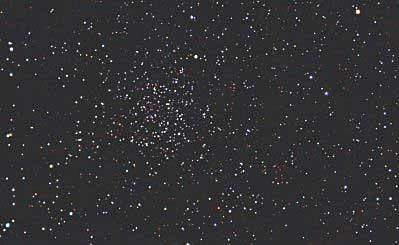Why is the sky dark at night?

The Night Sky. Courtesy: Google Images
In 1826, a Viennese physician named Heinrich Olbers brought to the attention of astronomers one of the most basic questions in cosmology. Why is the sky dark at night? Since the night sky is filled with stars literally overlapping each other, shouldn't it be uniformly bright? Yet the night sky appears black with stars, planets, and galaxies scattered all over. This contradiction between theory and reality is known as "Olbers' paradox." At first, the question may seem stupid and nonsensical, but it has profound implications.
Olbers was a believer in the Newtonian model of the Universe. Newton believed that the stars and galaxies are homogeneously and isotropically distributed throughout the space. Over a long period of time, the attractive gravitational forces between the heavenly objects would cause all of them to fall together, and the Universe would soon be a compact blob. Obviously, this has not happened. This led Newton to conclude that the Universe is static and infinite dotted with stars. In other words, the Universe is eternal; it will exist forever without major changes in its structure.
Olbers could not reconcile dark night with a static, infinite Universe. He argued that if space, populated with stars and galaxies extends sufficiently far, then regardless of in what direction we look, our line of sight will eventually reach the surface of a star. Furthermore, if the Universe is infinitely old, there would be a star everywhere we looked in the night sky. Even if they appear very faint to us, the diminishing brightness of distant stars are exactly balanced by their increasing numbers. Hence, stars at all distances contribute equally to the total amount of light received on Earth. Thus the entire night sky should be covered with stars glowing brilliantly with no dark spaces between them.
Olbers's paradox suggests that something is wrong with Newton's infinite, static Universe. The resolution of the paradox lies in the fact that the Universe is neither infinite, nor eternal, nor static. If we believe in the Big Bang Theory, the Universe is expanding with distant stars and galaxies receding from us at high velocities. When radiation or light is emitted from a receding source, it is Doppler shifted to larger wavelengths. In the jargon of physics, this is known as red shift. The intensely high energy gamma-rays (wavelength less than 0.00000000001 meter) and other forms of radiation that emanated after the Big Bang have been mostly red-shifted to microwave and radio wave regions (wavelength between 1mm and 1 km), losing nearly all of their energy. The red-shifted wavelengths are so large that they are outside the visible part of the electromagnetic spectrum. If there is no visible light, we won't see a glowing sky. Thus, an expanding Universe can make the night sky dark.
While the expansion of the Universe partially explains the paradox, it does not completely account for the darkness of the sky. The finite age and size of the Universe is also responsible for dark nights. Irrespective of whether the Universe is finite or infinite in extent, its finite age of 14 billion years means it has a horizon beyond which stars and galaxies cannot be seen. It is highly likely that there are an infinite number of stars beyond that cosmic horizon and their light has not yet reached us. Interestingly, this argument was advanced in 1848 by the American poet and writer Edgar Allan Poe.
Another reason is the finite lifetime of the stars. After a few billion years or so stars consume their nuclear fuel, grow dark, and die. The gas and dust spewed back into space by the dying stars are used to give birth to new generations of stars. However, this process cannot continue forever. Eventually, all the nuclear fuel in the universe will be exhausted, and no new stars will be formed. So even if the universe were both infinitely old and large, there won't be enough fuel to keep the stars shining forever and fill up the space with starlight. Hence, the night sky is dark. The dark night is another evidence of the Big Bang model of the Universe.
Stars, in your multitude, scarce to be counted, filling the darkness with order and light. Victor Hugo, "Les Miserables."

 For all latest news, follow The Daily Star's Google News channel.
For all latest news, follow The Daily Star's Google News channel. 



Comments